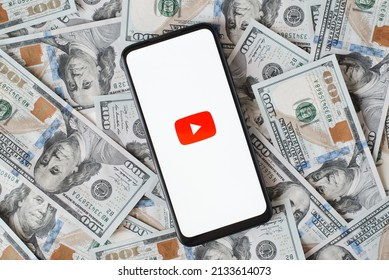We provide expert tips and strategies for making money online,
The YouTube pay scale is a hot topic among aspiring creators, influencers, and digital marketers. As YouTube continues to be a dominant platform for video content, understanding how its monetization system works is essential. This article explains how the YouTube pay scale functions, factors influencing earnings, and how creators can maximize their revenue.
1. What is the YouTube scale?
The YouTube pay scale refers to how YouTube compensates its content creators. Creators primarily earn through the YouTube Partner Program (YPP), which allows them to monetize their videos with ads. However, other factors like sponsorships, merchandise sales, and membership programs also contribute to overall earnings.
YouTube pays creators through AdSense, which shares a portion of ad revenue generated from video views. Typically, creators earn 55% of the ad revenue, while YouTube takes 45%. The exact amount a creator earns per view varies, but most creators see an average of $0.01 to $0.03 per ad view.

2. Factors Influencing the YouTube Pay Scale
While YouTube provides a general structure for its pay scale, several factors influence how much a creator can earn:
a. CPM (Cost per Mille):
The CPM is the amount advertisers pay for every 1,000 ad views. CPM varies widely based on the region, audience demographics, and content category. Creators with a higher CPM can earn significantly more on the YouTube pay scale.
b. CPC (Cost per Click):
In addition to CPM, creators may earn through Cost per Click (CPC) ads. These are ads where the advertiser pays YouTube every time a viewer clicks on the ad. High engagement rates with clickable ads can boost earnings.
c. Niche and Audience:
The topic or niche a creator covers can affect the YouTube pay scale. For example, finance and tech channels tend to have higher CPMs because advertisers in those industries are willing to pay more to target specific audiences. On the other hand, entertainment or gaming channels might see lower CPMs but compensate with a larger viewership.

3. Monetization Beyond Ads: Expanding the YouTube Pay Scale
Though ads are the primary source of income for most creators, YouTube offers additional ways to earn money:
a. Channel Memberships:
For creators with a loyal fanbase, channel memberships offer viewers exclusive perks in exchange for a monthly fee. This adds a consistent revenue stream to the YouTube pay scale.
b. Super Chats and Super Stickers:
During live streams, fans can pay to highlight their messages or stickers, giving creators another way to monetize their interaction with their audience.
c. Merchandise and Sponsorships:
YouTube’s built-in merchandise shelf allows creators to sell branded products directly from their channel. Sponsorship deals, where companies pay creators to promote products or services, can also significantly impact the YouTube pay scale.
4. YouTube Shorts and Its Effect on the Pay Scale
YouTube introduced YouTube Shorts as a response to the rise of short-form video platforms like TikTok. Creators who post YouTube Shorts can also earn revenue, although the YouTube pay scale for Shorts is slightly different from regular videos.
Currently, YouTube allocates a Shorts Fund where it pays creators based on the performance of their Shorts content. While the fund is a fixed amount, the earnings for each creator depend on the number of views and engagements their Shorts receive.
5. How to Maximize Earnings on the YouTube Pay Scale
There are several strategies creators can implement to increase their earnings on YouTube:
a. Create Evergreen Content:
Videos that remain relevant over time, known as evergreen content, can continually generate views and ad revenue. This helps boost the overall income from the YouTube pay scale.
b. Optimize for SEO:
Properly optimizing video titles, descriptions, and tags can improve visibility and ranking on YouTube, leading to higher views and potential earnings. Including keywords like YouTube pay scale in the description or video title can help reach more audiences interested in monetization.
c. Engage with the Audience:
The more engaged an audience, the higher the likelihood of success with ads, sponsorships, and memberships. Engaging with viewers through comments, live streams, and polls can build a strong community, which helps improve the creator’s standing in the YouTube pay scale.
6. Challenges in the YouTube Pay Scale
Despite the potential for substantial earnings, creators face challenges within the YouTube pay scale:
a. Fluctuating Ad Rates:
Ad rates, and thus earnings, can fluctuate due to market conditions, seasonality, or global events, making income somewhat unpredictable for creators.
b. Algorithm Changes:
YouTube’s algorithm is continuously evolving, and changes can impact video visibility. A drop in views can drastically affect a creator’s earnings on the YouTube pay scale.
c. Content Demonetization:
Certain content may be demonetized due to violations of YouTube’s guidelines, reducing ad revenue potential. Creators must be cautious about the content they produce to ensure they stay within YouTube’s monetization policies.
Conclusion
The YouTube pay scale offers lucrative opportunities for content creators, but it is influenced by various factors such as CPM rates, niche, audience engagement, and external monetization avenues. By understanding how these elements work together, creators can develop strategies to optimize their earnings and sustain a successful career on the platform. As YouTube continues to evolve, so will the opportunities within its pay scale for those who are willing to adapt and innovate.





[…] you’re looking to add Shorts to your existing YouTube strategy or start fresh, it’s clear that this format offers exciting new opportunities for creators to […]
[…] it may take some time to build an audience, starting a blog or YouTube channel on topics you’re passionate about can lead to long-term passive income. By monetizing your content with […]